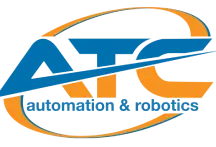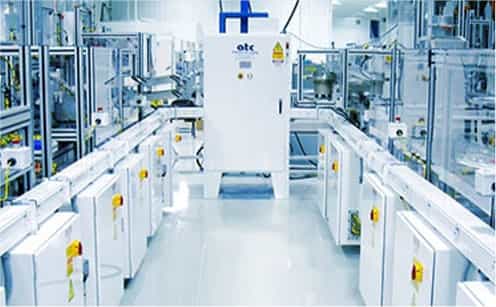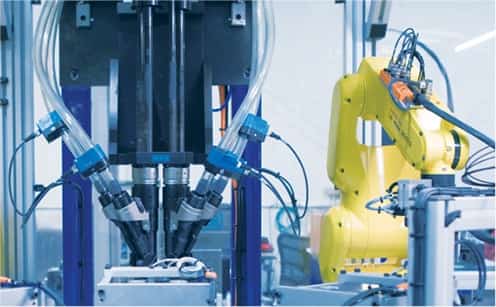Marking Systems
Across every industry and on various materials, ATC has implemented hundreds of custom part marking solutions for our customers. Technologies have included but are not limited to labeling, non-contact ink jet printing, pad printing, dot peening, impact presses, heat stamping, and laser marking. Our customers place all types of marks including logo’s, part numbers, barcodes, 2D data matrix’s or QR codes, as well as graduated marks for metrics.
Part marking verification is also a core competency of ATC Automation. After a mark is placed, we can verify that the mark is to specification (grade) and able to be read by all read stations.
The technology utilized depends on the material, the time in station to perform the marking operation, the resolution/contrast required for the mark, as well as budget. ATC Automation works with our customers to determine the best technology for their product. We have experience marking the most challenging of products such as clear plastics and thin films.
Laser marking is one of the most flexible marking technologies in that it can create a high-quality mark on a variety of materials that can have irregular surfaces. Safety concerns with lasers such as enclosure design, laser light escapement and fume generation are all addressed through design solutions that ATC Automation has regular experience implementing. Depending on the material and the type of mark, there are several laser technologies as well as several suppliers who offer robust solutions. ATC Automation will work with our suppliers to find the best solution for your application and certify with its in-house laser certified inspector to verify the guarding is safe.
Part marking and manufacturing traceability is considered by many industries essential for quality assurance. If placed early in the process, ATC can read a Unique Device Identifier (UDI) mark in each station and store critical production data for that individual part. For ease of traceability it is typically recommended to mark the parts early in the process. If the mark is placed later in the process, the system PLC can temporarily store the production data for each part and assign it to the UDI mark for storage on a local server. Placing a mark later in the process allows customers to mark parts with reject identifiers or to not mark the parts at all, allowing for the possibility of rework.




